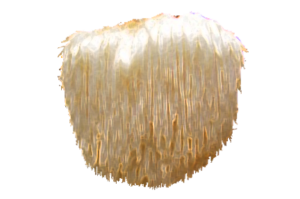Li G, Yu K, Li F, Xu K, Li J, He S, Cao S, Tan G
Abstract
ETHNOPHARMACOLOGICAL RELEVANCE:
Hericium is a genus of mushrooms (fungus) in the Hericiaceae family. or(HE) has been used for the treatment of digestive diseases for over 2000 years in China. HE possesses many beneficial functions such as anticancer, antiulcer, antiinflammation and antimicrobial effects, immunomodulation and other activities. The aim of the studies was to evaluate the anticancer efficacy of two extracts (HTJ5 and HTJ5A) from the culture broth of HE against three gastrointestinal cancers such as liver, colorectal and gastric cancers in both of in vitro of cancer cell lines and in vivo of tumor xenografts and discover the active compounds.
MATERIALS AND METHODS:
Two HE extracts (HTJ5 and HTJ5A) were used for the studies. For the study of chemical constituents, the HTJ5 and HTJ5A were separated using a combination of macroporous resin with silica gel, HW-40 and LH-20 chromatography then purified by semipreparative high-performance liquid chromatography (HPLC) and determined by nuclear magnetic resonance (NMR) spectra. For the in vitro cytotoxicity studies, HepG2 and Huh-7 liver, HT-29 colon, and NCI-87 gastric cancer cell lines were used and MTT assay was performed to determine the in vitro cytotoxicity. For in vivo antitumor efficacy and toxicity studies, tumor xenograft models of SCID mice bearing liver cancer HepG2 and Huh-7, colon cancer HT-29 and gastric cancer NCI-87 subcutaneously were used and the mice were treated with the vehicle control, HTJ5 and HTJ5A orally (500 and 1000 mg/kg/day) and compared to 5-fluorouraci (5-FU) at the maximum tolerated dose (MTD, 25-30 mg/kg/day) intraperitoneally daily for 5 days when the tumors reached about 180-200 mg (mm(3)). Tumor volumes and body weight were measured daily during the first 10 days and 2-3 times a week thereafter to assess the tumor growth inhibition, tumor doubling time, partial and complete tumor response and toxicity.
RESULTS:
Twenty-two compounds were obtained from the fractions of HTJ5/HTJ5A including seven cycli dipeptides, five indole, pyrimidines, amino acids and derivative, three flavones, one anthraquinone, and six small aromatic compounds. HTJ5 and HTJ5A exhibited concentration-dependent cytotoxicity in vitro against liver cancer HepG2 and Huh-7, colon cancer HT-29, and gastric cancer NCI-87 cells with the IC50 in 2.50±0.25 and 2.00±0.25, 0.80±0.08 and 1.50±0.28, 1.25±0.06 and 1.25±0.05, and 5.00±0.22 and 4.50±0.14 mg/ml; respectively. For in vivo tumor xenograft studies, HTJ5 and HTJ5A showed significantly antitumor efficacy against all four xenograft models of HepG2, Huh-7, HT-29 and NCI-87 without toxicity to the host. Furthermore, HTJ5 and HTJ5A are more effective than that of 5-FU against the four tumors with less toxicity.
CONCLUSION:
HE extracts (HTJ5 and HTJ5A) are active against liver cancer HepG2 and Huh-7, colon cancer HT-29 and gastric cancer NCI-87 cells in vitro and tumor xenografts bearing in SCID mice in vivo. They are more effective and less toxic compared to 5-FU in all four in vivo tumor models. The compounds have the potential for development into anticancer agents for the treatment of gastrointestinal cancer used alone and/or in combination with clinical used chemotherapeutic drugs. However, further studies are required to find out the active chemical constituents and understand the mechanism of action associated with the super in vivo anticancer efficacy. In addition, future studies are needed to confirm our preliminary results of in vivo synergistic antitumor efficacy in animal models of tumor xenografts with the combination of HE extracts and clinical used anticancer drugs such as 5-FU, cisplatin and doxurubicin for the treatment of gastrointestinal cancers.
Copyright © 2014 Elsevier Ireland Ltd. All rights reserved.
Reference:
J Ethnopharmacol. 2014 Apr 28;153(2):521-30. doi: 10.1016/j.jep.2014.03.003. Epub 2014 Mar 12

